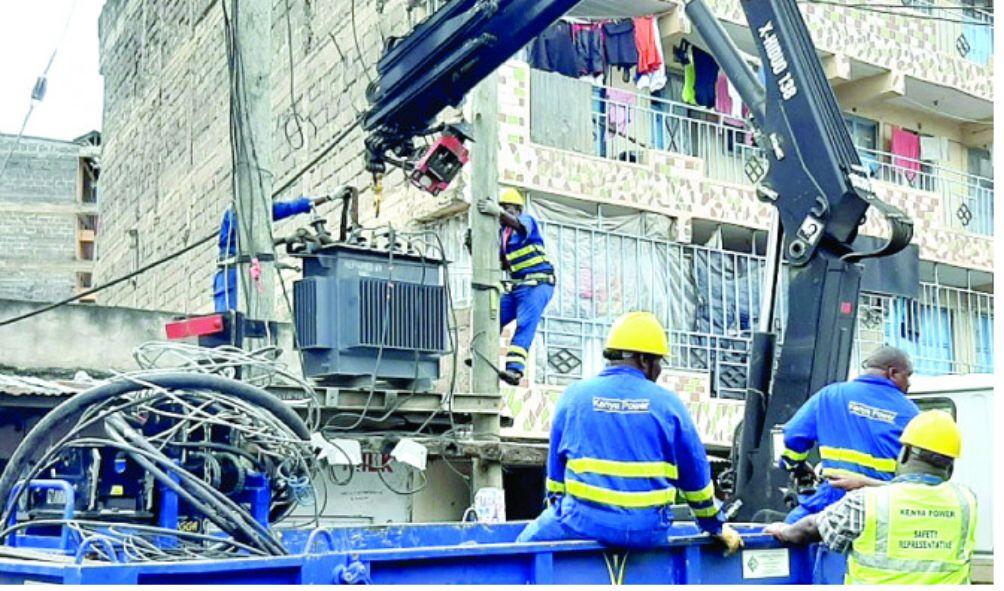KPLC Adapts to Power Loss, Seeks Uganda’s Aid
Kenya Power and Lighting Company (KPLC) has revealed how its technicians worked around the clock to restore power after a nationwide outage lasting more than twelve hours.
KPLC announced on Saturday, August 26 that after losing 270MW of generation from the Lake Turkana Wind Power Plant (LTWP), their engineers turned to alternative power sources, including contacting Uganda for assistance.
However, Uganda failed to assist Kenya in its time of need, forcing Kenya Power to turn to the Seven Fork Hydro power stations in Thika, which were promptly put to use to begin the restoration process.
KPLC explained that integrating Seven Fork Hydropower was a much more time-consuming option than importing electricity from Uganda Electricity Transmission Company Limited (UETCL).
Kenya Power also disclosed that the importation of electricity from Uganda would have been more efficient and expedient during the crisis, but was unavailable.
Nevertheless, it sought out Uganda for assistance in ending the over 20-hour blackout.
“We are working together to restore the Uganda interconnector to enhance our grid recovery efforts,” Kenya Power disclosed.
In the managers’ contingency plan, KPLC swiftly designed a framework that would stabilize the imbalance in the power system that also triggered all other major generation units and stations, resulting in a grid-wide blackout.
“Although there are situations in which a plant could trip, our technical teams are analyzing the data from the protection relays to determine the primary cause of the trip, which resulted in a cascading system failure.
Kenya Power explained the cause of the blackout as follows: “The System Demand at the time was 1855.8 MW; therefore, a loss of approximately 15% of generation was expected to cause a widespread power outage.”
ALSO READ: Kenya Power Updates Nationwide Outage
After stabilization, the engineers mobilized the restoration of the power supply, which began as soon as the lines transporting the affected generation were disconnected.
As the majority of the grid was restored sequentially from Central and Eastern Regions, where the hydro generation is located, to Nairobi, Kenya Power technicians quickly recorded positive outcomes.
“By 11:45 p.m. tonight, the majority of the transmission grid had been re-energized, and normal power supply to customers had been restored as generation returned to service.
In addition, Kenya Power reported that it is in the final phases of integrating energy from the Olkaria complex, where the majority of geothermal plants are located.
It was explained that the incorporation of the Olkaria complex would enable the restoration of power supply to portions of Nairobi, Coast, Western, Central Rift, North Rift, and South Nyanza that remain without power.
Kenya Power noted, “We apologize to our esteemed customers for the inconvenience and thank them for their patience.”
Uganda intended to connect its grid to Kenya at Malaba, to the Democratic Republic of the Congo at Mpondwe, to South Sudan at Nimule, and to Tanzania at Mutukule by March 2023.
By that point, Uganda had powered up its line to the Mirama Hills interconnection point. The extension, however, was delayed due to the halted construction of high-voltage overhead transmission lines in neighboring countries, including Kenya.
According to Irene Pauline Batebe, permanent secretary of Uganda’s Energy Ministry, these extensions were a part of the larger Eastern African Power Pool Power (EAPP), a projection of the future connections between various power infrastructures.
Uganda has pledged to export electricity provided that its neighbors complete their evacuation programs.
KPLC Adapts to Power Loss, Seeks Uganda’s Aid
